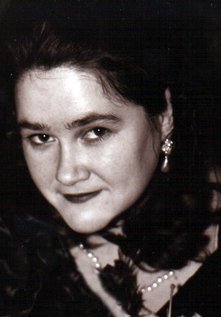If one is talking about images, lasting images in art there has to be contrast. I was reading an article today about painting where the artist was stating that great art comes from composition. If you paint an orange on top of the bottle verses to the side, you get a very different feeling.
How do you enter the poem? In what angle do you see? If you're apply everything to painting, (and why the hell not) it matters where you put your orange. To me, a good poem can be read at any point and come back to its self. I can start in the middle, make the end the first verse and it still works.
I am queen at playing round robin with my book, which may be why I de bowel the damn manuscript more times then one would think possible. Because if you keep turning the painting or the mind’s eye, you are going to find the one place to enter no one has ever thought of before, and that my friends is art.



5 comments:
As I understand it, one of the things Picasso and Gris and others were trying to do, when they started working with what later came to be called Cubism, was ask visual questions about the notion of a point of view. A Cubist painting is, among other things, an attempt to suggest seeing the thing painted from several (apparently contradictory) points of view at once.
So, for example, a painted figure of a man or woman has two eyes on one side of the head, and too much of the mouth is showing to be consistent with a realistic representation of the head, and the neck and upper back are turned at an impossible angle in relation to the position of the legs and feet. The figure is seen, and painted, as if from several incompatible points of view simultaneously (or maybe not "as if").
John Berger wrote about this with great insight in his essay "The Moment of Cubism" in his essay collection The Sense of Sight, and the essay was reprinted in his Selected Essays.
One of my objections to much of the poetry that gathers under the broad umbrella of "post-modernism" ("Language" poetry and related flavors, among others) is that, where the early 20th century Cubist painters were attempting to suggest the possibility of multiple points of view -- and, from that, the tentative character of any given point of view --, much post-modern poetry seems to be on a trajectory toward denying the possibility of a point of view at all; as though the poem had not been written by an actual human being, but just found its way on to the page or the screen by itself.
Oh would you say Stein does that? Because I would consider her a cubist poet also Carole Maso does that brilliantly with her prose and poetry.
One of the issue or talents of doing this successfully is that “cubism” does not equal “chaos.” One can enter at different points of view and still have order. It is not just a mixed up head or a body at bend angles; it is the interweaving of structure and perspective.
I will look for the article, thank you.
I'm not that much concerned with what name to give to it (Cubist or whatever else), but, to answer your question --
I don't necessarily think of Gertrude Stein as doing quite the same thing that (for example) Picasso or Gris or similar painters were doing when they did Cubist work. I think of Stein as more akin, perhaps, to someone like Jackson Pollack or Elaine de Kooning, or possibly Kandinsky. Robert Motherwell also comes to mind.
If I were to give it a name, I'd call what Stein did closer to what's now known as Abstract Expressionism, than to Cubism, though clearly there's some overlap, and these anyway are not hard and fast categories.
Some poets I think of as Cubist might be Pierre Reverdy, Paul Eluard at times, more recently Odysseas Elytis. Maybe Lorca sometimes too, though I haven't usually thought of him that way.
I view Stein more cubist-like. Here is a small piece from Tender Buttons... Objects:
A Long Dress
What is the current tha makes machinery, that makes it crackle, what is the current that presents a long line and a necessary waist. What is this current.
What is the wind, what is it.
Where is the serene length, it is there and a dark place is not a dark place, only a white and red are black, only a yellow and green are blue, a pink is scarlet, a bow is every color. A line distinguishes it.
A line just distinguishes it.
I agree with Lyle that, if we are to come up with Stein's visual couterpart, Pollack fits better than, say Picasso.
However, I also think the classifications are less important than the realization that all of these artists used the idea of perspective as foundational in their work. As do we, often times.
Post a Comment